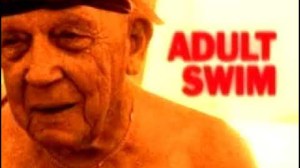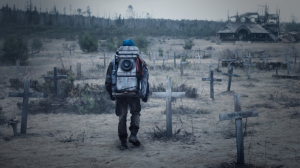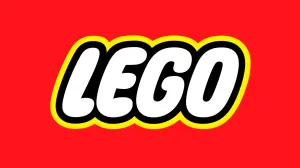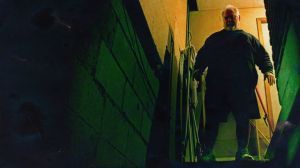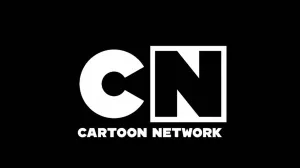
A little while back, we reviewed Devolver Digital’s Crossing Souls, which pays loving homage to the 80’s with a spectacular story, backed by fun retro visuals, a moving soundtrack, and gameplay that will keep you intrigued as you complete each new level.
Videos by ComicBook.com
But it wasn’t enough that we got to experience the 80’s with Crossing Souls – we really wanted to get inside the heads of the team at Fourattic to find out what inspired the game’s creation. Was this team avid fans of Stranger Things? Or perhaps their love lies within something deeper from the decade. Maybe all those ALF reruns…
So we sat down with designer and programmer Juan Diego Vazquez, as well as artists Juan Gabriel Jaen and Daniel Benitez, to find out what inspired their creation of the game.
First off, congratulations on the launch of Crossing Souls. How excited is your team to see the launch of the game?
Vazquez: After three years under development and with it being our very first game, launching Crossing Souls worldwide makes us feel like first-time mothers! It’s beautiful and a bit scary at the same time, but above all we feel happy and proud of what we have managed to do after all this time. We’ve gone from knowing almost nothing about how to make a game to finishing it and letting it go into the world. It’s one of the most wonderful experience we’ll ever have for sure.
Gonna Get Back In Time

We’ve seen a TON of inspired 80’s references in the game. We’re still running into them. Did you guys just sit around and go, “Hey, wouldn’t it be cool if we included…?” Or did you go about including all these references a different way?
Jaen: It’s a good question, because there’s a lot of references included in both ways. At first, we designed the plot and characters with references directly mind to make their inclusion work.
On one hand, there’s moments we use to make references to other games, films, etc. A good example of that could be Major Oh Rus, who has some clear references to classic enemies like Mr. Bisson or Captain LeChuck. There are things we did to make these tribute more obvious, like how the first time you see Major Oh Rus is in a cutscene which progresses similarly to the first time you see LeChuck in Monkey Island, for example.
We also generally loved putting references in the game, so when we were designing the world or making backgrounds, we were always thinking “Hey, what if we included here…”. It’s funny how we started with all these crazy ideas for references and ended up having the opportunity to put them in there.
Tell us what inspired the story, and the sci-fi twist that comes with it (in terms of switching between realms).
Benitez: The basic idea was based on one of the biggest unknowns: where do we all go after death? We started thinking on it deeply, imaging that we probably are always surrounded by dead people who were here before us. And how our life would be if we can just be connected and interact with them when we want. Normalizing that situation was the main point for this game, and after thinking about that as a game mechanic for a few days, we began structuring all the basic gameplay around that idea.
We didn’t worry about whether a sci-fi movie did that before us, we just wanted to imagine a world where interacting with ghosts was simply something natural. A lot of weird situations began to come to our minds after establishing that as a basic mechanic, so we wrote up a lot of fun concepts around the idea.
Above that, Ghostbusters and other ghost stories really fit this concept in terms of aesthetic and humor. But 80s movies weren’t our only inspiration; Crossing Souls’ ghosts are pink because we are fans of a comic series called SAGA, where the ghosts are a similar rose color.
80’s Inspirations Galore

What inspired the character design within the game? Would you say the team had friends like this when they were kids?
Vazquez: Of course! We took the main inspiration directly from movies like the Goonies or Stand by Me, but we think that all of us had the same sort of core friend groups when we were kids. Above all, we wanted to recover that feeling of friendship, where each friend is totally different, but still shared that connection where you feel like you would do whatever was necessary to help them, because they were the most important thing in your life.
As an adult, you tend to worry more about things like paying bills and going to work, and that’s why we felt that way and missed the old days, when you use to spend the whole day with your friends, inside or outside school and you never got tired of that. We hope we can bring back these memories to players and make them feel a bit happy remembering some good past times with their friends 🙂
Big nod to the video game style sequences within the game. We can tell that you guys must be fans of Battletoads.
Vazquez: Well, we wanted to make some references to “old games”, but it wasn’t Battletoads what we had in mind. That race had an inhuman level of difficulty. If you don’t think the same, please, just play Battletoads and compare, haha. What we had in mind was Aladdin on the Super Nintendo and Sega Genesis. It was a difficult level, but not overwhelming. Also we have another games references, like 1942, Streets of Rage…
We wanted to add variety to our game and make a little tribute to the games we enjoyed so much. Maybe these old-school references also brought additional difficulty to our game, but it wouldn’t be retro without a bit challenge.
What inspired you when it came to putting the story together? Especially when it came to a particular twist with one of the leads? (Don’t worry, we won’t spoil.)
Benitez: This is a good question, as we really wanted from the very beginning of the development to add some main twists to the story which were unrelated to previous 80s movie or series. Something which could really immerse the player into a whole new situation that was unexpected. At the beginning, probably a lot of players think, “Alright, this is an 80s revival and I already know what is going to happen at any step because I’ve watched all those movies.” Which is okay, but we didn’t want the game to be too predictable.
So answering your question, we didn’t think in specific references for those twists of our game. Those plot points more represent our own contribution to the theme of childhood adventure. We knew the risks involved with altering what players might expect it to be, but we took that risk as something which would represent us as a studio. And a lot of players have noticed that, so we can say that our voice has been heard.
A Style All Its Own

Tell us how you made the character switching system work. We noticed the sly references regarding those too.
Vazquez: We wanted the player to feel that he was part of a gang like in his old days. We considered several ways to handle this, but we did know for sure that we didn’t want a turn-based system like the old JRPG’s because we liked the idea of the game being more of an action-oriented adventure. Sort of like the pacing you get while watching The Goonies with things happening all the time, something very dynamic. Therefore, we went with the switch out system, a quick way to control a gang without making a complex combat system and above all, a system that lets the player change between characters to consider every character’s abilities during exploration, which for us was as important as the combat.
Also, let’s talk about those inspired cinematic animated sequences. How did you put these together?
Vazquez: Well since we wanted to get the vibe from the 80s, we thought from the very beginning about these kinds of scenes. Since it’s a heavily inspired narrative game, we knew for sure we wanted to give a more dramatic touch to certain moments, and we instantly thought of the cartoons we used to watch every Saturday morning when we were kids.
We knew their production was going to be a bit tough because animation is such an artistically demanding task, let alone time consuming, plus we are such a small team. But we really wanted to include them because we knew people would love it, so one of us was focused on creating them at a full time capacity and we managed to include them in the game. It’s something we’re really happy with and proud of!
Community…And What’s Next

Would you say that Crossing Souls has built up a pretty good community since its release, or with trade show appearances?
Jaen: Yes, of course. In fact, to have a strong little community is something we wanted since we started, just to have feedback and to talk with people as passionate about the game as we are. Seeing what people think about your work is a good way to see if you’re heading in the right direction, because our final goal is basically just to make those people happy. It’s our game, yes, but it’s really for them. What we wanted with Crossing Souls was to touch some hearts with its story, and to see that we’re achieving that makes us so happy.
Since the game’s release, we still keep in touch with our little community to solve problems, answer questions and to keep in mind what we should do for future patches. The biggest portion of our community is on Steam, but there’s also a lot of streamers and YouTubers as well.
Finally, what’s next for you guys? Would you say there’s a chance that Crossing Souls will continue on with a sequel, or is it too soon to tell?
Benitez: It’s too soon to tell but, honestly, we are more into creating a brand-new thing than a sequel at this moment. We want to explore new ways, new stories, new mechanics, etc. using all of the experience we have accumulated over these years. We still are working on Crossing Souls, but after a well-deserved holiday we want to start playing around with some ideas we already have in mind and create another game from scratch. We love to learn new things and look forward to playing around with some prototypes to help with figuring out what would be our next ideal project.
Let’s see what the future brings…
Crossing Souls is available now for PlayStation 4 and PC.

